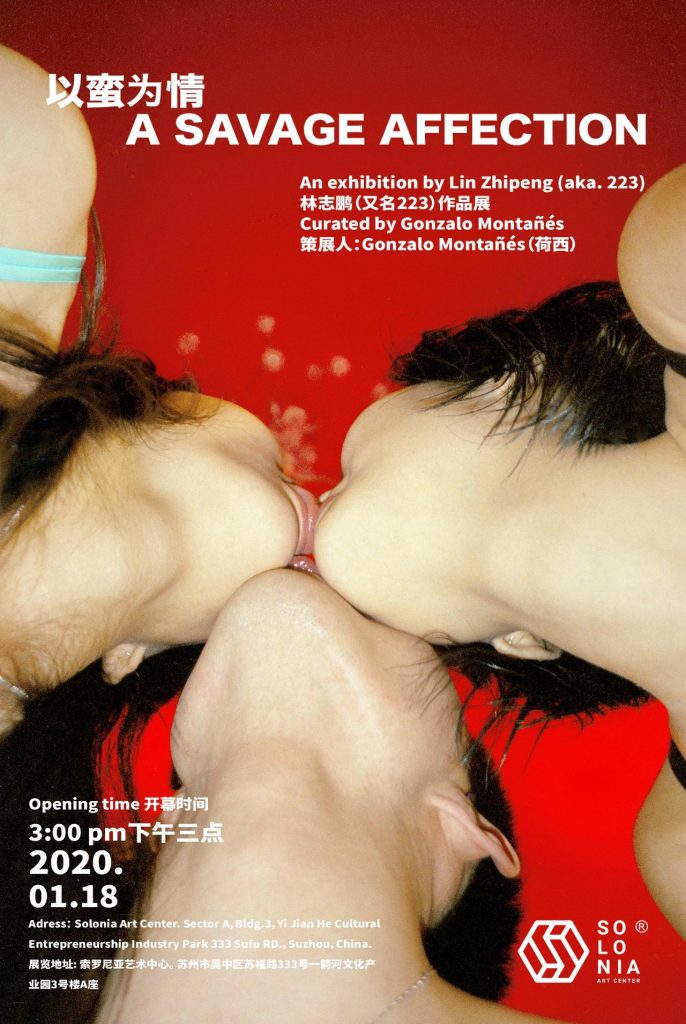This article is courtesy of Gonzalo Montañés, curator of Solonia Art Center in Suzhou, China
There is always a dooming side to the label “experimental”. It is well known, for example, the rejection of this term that the cinematographer Andrei Tarkovsky had when it was applied to his films. For him, “experimental” suggested a mere “attempt”, a notion of the “unfinished”.
The origins of “experimental photography” in China can be traced to the 1970s, gaining traction in the ’90s. As author Wu Hung poses, the first approach to this term came into being via the negation by many amateur authors of the perceived limiting characteristics of “Chinese photography” (Zhongguo sheying) and the agents that constituted it. Again, as we can see, the term experimental was linked with the term “amateur” or “non-professional”, echoing the non-seriousness of experimental art.
However, as Wu Hung states: Unlike the amateur photographers of the 1970s and 1980s whose career paths often ended in “professional” institutions, the experimental photographers of the 1990s insisted on their outsider’s position even after they became well known.1
The body of work of these new photographers would come to solidify when progressively nurturing itself with a conceptual framework at the end of the ’90s. “Until then,-Wu Hung continues- experimental photographers had identified their art mainly through ‘negation’: it was by divorcing themselves from mainstream photography that they established their alternative position. But now they also hoped to define experimental photography as an art with its own intrinsic logic, which they found in the theories of Conceptual Art”.2
Serving as a branch of the New Wave Movement in the last two decades of the XX Century in China, this new way of approaching the photographic exercise progressively solidified and consolidated itself as a serious and culturally relevant practice. Having successfully distanced itself from the more “documentary” past of Chinese photography, conceptualism was just the first step to a rhizomatic development of Chinese contemporary photography, with a multidirectional explosion and approach to themes and mediums filtered by radical self-expression and a particular highlighting of the position of the artist’s “self”, both as artist and as individual in this new context.
Focusing on the medium, it is noteworthy, as Wu Hung points out, the “extreme importance” new technologies have on new photographers and the visual effect of their works, in Wu Hung’s words “because it reveals an obsessive pursuit of dangdaixing or “contemporaneity.”3
On a more philosophical or conceptual level, the departure from documentary tradition has reached the field of appropriation and the alteration in the case of Hong Lei’s (b.1960), and further insights have been made around the staging and re-staging as in the case of Wang Qinsong (b.1966) or, particularly, in the interdisciplinary practice along with installation and performance art.
The photographs by 223 come most often as snapshots, although a cinematographic aura is present in many of them, taken in their majority around the artist’s friend circle.
Yet while the overtly political craved for by many Western academics from the hand of Chinese artists may be no more interesting for many new photographers, it is undeniable that the social questions plague the younger photographers in their quest to understand their position in society. Ye Fan (b. 1986) focuses her photography on capturing a more diverse and unstereotypical notion of Chinese femininity in her Her series; Yangkun Shi (b. 1991), having returned to his home city after a long period of studying abroad, came back to a modernized city that now felt unrecognizable, producing in him a form of melancholy and homesickness in spite of being “home”. In his series Solastalgia, he further explores his estranged vision of his surroundings and comes to terms with his own feelings and position in this environment.
One of the most impactful questions is, of course, that of sex and nudity as a pervasive social taboo, as the work of Lin Zhipeng comes to work on.
Born in Guandong province, Lin Zhipeng’s (林志鹏) studies were not at all related to photographic practice, having majored in financial English from Guangdong University of Foreign Studies. However, this didn’t stop him from becoming one of the leading figures of contemporary Chinese photography with his unpreoccupied stagings and playful vision of youth and the human body. Based now in Beijing, “No.223” ( a nickname picked up after the police character in Wong Kar-wai’s movie Chungking Express which has become a second name for the artist) produces a line of work focused on the post-’80s and 90’s Chinese youth.
The photographs by 223 come most often as snapshots, although a cinematographic aura is present in many of them, taken in their majority around the artist’s friend circle. His work is instinctive, hardly planned, improvising with the found objects in the most immediate surroundings.
Yet while the work of Lin Zhipeng may speak consistently to Eastern audiences, one must be cautious to champion its showcasing in a “sexually liberated” West, where works of art such as Michelangelo’s David (1504) or Picasso’s Women at their Toilette (1956) or even the 30,000-year-old Venus of Willendorf (ca. 28,000-25,000 BCE) have suffered the censorship of various media channels, and where some feminist circles have turned to a censoring attitude denouncing many showcasing of female nudity in art to the point of taking down John William Waterhouse’s Hylas and the Nymphs (1896) from Manchester Art Gallery in 2018.
In this sense, the work of Lin Zhipeng falls right at the “glocal” position in which Karen Smith locates the future of Chinese contemporary art. Furthermore, as Smith suggests, there are currently two main challenges that Chinese artists have to face: the first, in Smith’s words “is to challenge received impressions of China”4[, a task that the work of 223 carries out with perfection.
The second point of significance – follows Smith – therefore, is for artists to place more emphasis and energy on their own personal agendas. In recent years, artists of both the older and younger generations are working in a more liberal atmosphere, and have demonstrated that they have a lot to say about their own situation. Interestingly, as they have done so, the bulk of the China iconography, the chinoiserie, has receded from the art.5
Speaking in such glocal terms, the work of Lin Zhipeng is situated at the crossroads of all these factors, making him one of the most relevant Chinese photographers today. His photography is playful, relaxed, somehow humorous and, why not, “experimental”, yet unseriousness in his approach may not be conflated with the notion of a non-serious work, denoting an unstable equilibrium between innocence and roguery, a hedonist fantasy yet not disconnected from social discourse.
A Savage Affection, an exhibition by Lin Zhipeng (aka 223) is on view at Solonia Art Center in Suzhou, opening on January 18, 2020.
Footnotes
- Wu, H., (2004, June). About Between Past and Future: New Photography and Video from China. Yishu Magazine, Summer issue. p. 9 ↩︎
- Wu, H., (2004, June). (2004, June). About Between Past and Future: New Photography and Video from China. Yishu Magazine, Summer issue. p.10 ↩︎
- Wu, H., (2004, June). About Between Past and Future: New Photography and Video from China. Yishu Magazine, Summer issue. p.12 ↩︎
- Smith, K., (2004, June). The Future: In Whose Hands?. Yishu Magazine, Summer issue. p.56 ↩︎
- Smith, K., (2004, June). The Future: In Whose Hands?. Yishu Magazine, Summer issue. p.58 ↩︎












